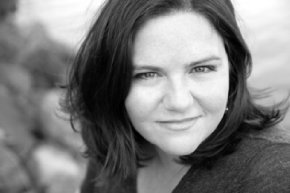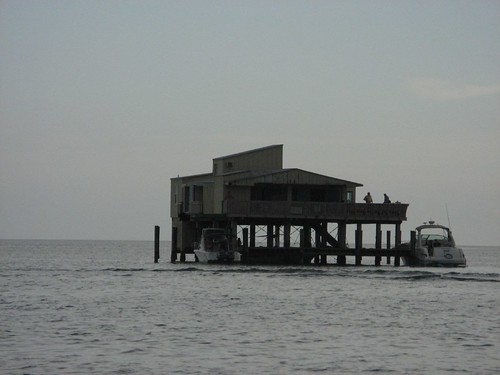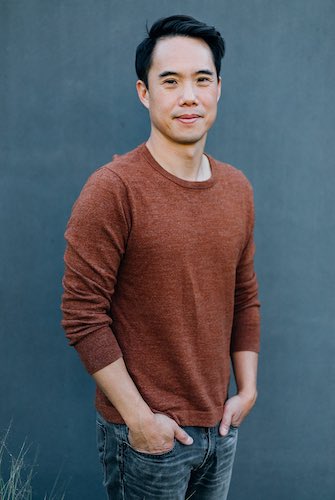 I recently had the pleasure of talking with author Susanna Daniel about her debut novel, Stiltsville (HarperCollins, 2010). A fictional memoir about the span of a long marriage, this book is set in the real neighborhood of Stiltsville, which is built of stilt houses over the ocean on the periphery of Miami. The novel was voted one of Amazon’s Best (August 2010), was chosen as a Barnes and Noble Discover Pick, and has received wide critical praise. Daniel’s short fiction has been anthologized in Best New American Voices and published in One Story, Epoch, the Madison Review, and SignificantObjects.com.
I recently had the pleasure of talking with author Susanna Daniel about her debut novel, Stiltsville (HarperCollins, 2010). A fictional memoir about the span of a long marriage, this book is set in the real neighborhood of Stiltsville, which is built of stilt houses over the ocean on the periphery of Miami. The novel was voted one of Amazon’s Best (August 2010), was chosen as a Barnes and Noble Discover Pick, and has received wide critical praise. Daniel’s short fiction has been anthologized in Best New American Voices and published in One Story, Epoch, the Madison Review, and SignificantObjects.com.
In the following conversation, Daniel shares her insights on the process of writing, the power of quiet stories—which she terms eminently readable—and the perseverance and faith that writers must nurture for their own work.

LAURA VALERI: What inspired you to write this book?
SUSANNA DANIEL I’ve always been interested in the subtle (and not-so-subtle) dramas and joys of domestic life. I also knew I wanted to parallel the story of a long marriage to the history of Stiltsville, the place, and the coming-of-age of the city where I grew up. To me, something like Anne Tyler’s Breathing Lessons or Justin Cronin’s Mary and O’Neil—both quiet books about marriage and family—make the best reading. These are the books I want to curl up with.
As a child you lived in Stiltsville. How much does your own life experience influence your writing? Do you find it challenging to separate your own memories from the stories you imagined for Dennis and Frances?
As a kid, I wasn’t a writer: I wasn’t mentally recording my surroundings at Stiltsville, and I don’t have a particularly good memory. So for the book, I try to place myself there, including the boredom and the long hours, the family arguments, the food and the noises and the smells, and sometimes I’m surprised at what comes up. Sometimes I feel so frustrated that I can’t just go back in time and be there again, to record the details. But sometimes I think it’s better to bring a little imagination to a historical setting, to give it a texture that the facts can’t convey.
You’ve been writing about Stiltsville for a very long time. And yet one could say that you’re intimately acquainted with many other settings, as you’ve lived in the Midwest and in New York for significant periods of your life. Can you tell us a little bit about the role of place in your writing? How do these settings compete with each other in your creative process when thinking of a story or novel? Why did Stiltsville in particular haunt you since your days as a student at the Iowa Writers’ Workshop?
Stiltsville is a perfect setting for fiction, and it’s shocking to me that no one has ever placed a women’s novel there. For one thing, when you put your characters together on an island, they speak more plainly to each other than anywhere else. Things come to the surface. Also, family life is all about living together on an island, navigating choppy waters, and standing together when everything crumbles around you. Stiltsville is both relegated to history and also still in existence, in a different form—like a lot of families, including mine.
You send Margo, the daughter of the main character, Frances, to college at the University of Florida, in 1990 and talk in depth about the serial killings there, even placing her in close proximity to the danger. Why was this historical detail important to the story? What inspired you to include it?
I was in high school when those murders happened, and I knew many kids who had gone off to UF by then, and I knew their families. I remember wondering what it must be like to be the parent of a child at UF at that time. You send your kid off to college, and you worry about drinking and drugs, grades, even eating habits. You don’t worry about a serial killer—and then this happens, and all bets are off. You realize, perhaps for the first time, that it’s not really possible to keep your child safe. All the decisions you make as a parent become, in the face of a threat like this, irrelevant. And in the family of the novel, not until this event does Margo start making her own choices, separately from her parents. It’s the first time they feel acutely that she has really left home.
Along those same lines, you talk about Stiltsville, the real place, factually and lovingly, but also politically. What do you think including the politics adds to the believability of the story?
Miami is a relatively new city. It was coming of age at the same time that the family in this novel is growing and changing. Stiltsville, the place, is a wonderful symbol of something that seems to have a strong foundation, but can—and does—falter in extreme circumstances, like a family can, or even a city. When you live in a place like Miami, there’s no separating the drama of family life from the drama of their surroundings. When the city around them erupts in riots, they can watch the fires burn from the safe distance of Stiltsville, but at some point they have to go back to dry land, and the parents have to figure out how to talk about difficult political times with their kid. Miami is a great place to grow up, but it’s not a simple place.
What inspired you to structure the book as you did, focusing on specific moments and forwarding through time until 1993? What did you find advantageous about this structure?
My goal from the start was to convey the entirety of a long marriage, from start to end. I wrote much, much more than what was included in the book, but in the end decided to focus on the moments in which the direction of the family changed unexpectedly.
Stiltsville is primarily a woman’s journey through love and life, and Frances is an insightful, sharp female heroine. I’d like to talk about the friendship between Frances and her sister-in-law. How important would you say female friendship is in literature about women? How does this kind of friendship contrast or underscore the relationship between Dennis and Frances? Between Frances and Margo?
Frances is essentially the interloper in the story at the beginning. Her presence breathes new life into Dennis’s relationships with his longtime friend, Marse, and with his sister, Bette. In many ways, he has never understood Bette the way Frances does. Bette is one of the reasons Frances takes the leap she does in marrying Dennis, and when Bette’s own romantic life takes her on a new path, Frances feels that an unspoken promise has been broken, almost as if she’s been cheated on.
You are especially praised by your readers as having a special touch creating realistic characters. What is your secret?
I think most writers are wary of slowing things down and describing a scene in detail. Some readers don’t want this. It’s tough to walk a line between writing a slow and steady, closely-focused character study and keeping up the pace and interest of a story. My book is for readers who are willing to become invested in the lives of the characters, to care about their choices, failures, and heartbreaks.
What are you most proud of in the book? What would you tell your readers to look forward to?
I’m proud of accomplishing something that a lot of people are afraid to do, unflinchingly: I wrote a quiet, domestic story that spans almost thirty years. I fictionalized a memoir. Readers might enjoy it or they might not, but still, it was a challenge and though I was tempted many times, I didn’t give in to the pressure to add more thrills and spills, to spice up a sad and true story.
You wrote in Slate about your struggle finishing the book. But once you had the finished manuscript you felt sure that you would print it. What gave you the confidence to pursue seeing the novel in print, after all that anxiety?
I’m not normally one to act on faith. I like reassurance as much as anyone else. But I knew that what I was writing would appeal to at least one agent, at least one editor. And that’s really all you need.
Did your experience struggling over finishing Stiltsville make it easier for you to confront the uncertainties of writing, or how do you look forward to your next big writing project?
No, it didn’t make it easier. My current project—Number Two, as I think of it—is a big hot mess, and I don’t know that I’m bringing anything I learned writing Stiltsville to the process of completing it. But then again, there is a small team of people now waiting for my next book. That means something. At the same time, I have lost the bliss of the first novel; now there are voices in my head, every blogger or reviewer, every criticism. The first book is really something special. I didn’t appreciate that at the time, of course.
What do you see as being your next big novel? Can you share it or give us a few hints?
I am working on a couple of different ideas; at the center of both stories is a marriage, and both are set in Miami. When I first started the process of writing another book—a process that for me is anything but linear—I felt so reluctant to leave behind the specific setting of Stiltsville. Then I realized: Why should I?
What is your best advice for writers who may be blocked into not finishing their novels or who are discouraged by the state of the publishing industry?
There’s no doubt that the publishing industry these days is changed, and is in many ways much more disheartening. But people are reading like crazy, so books are needed. One of them could be yours. There are no magic words, but I can promise that it’s better on the other side, once you finally get there. Much, much better.










